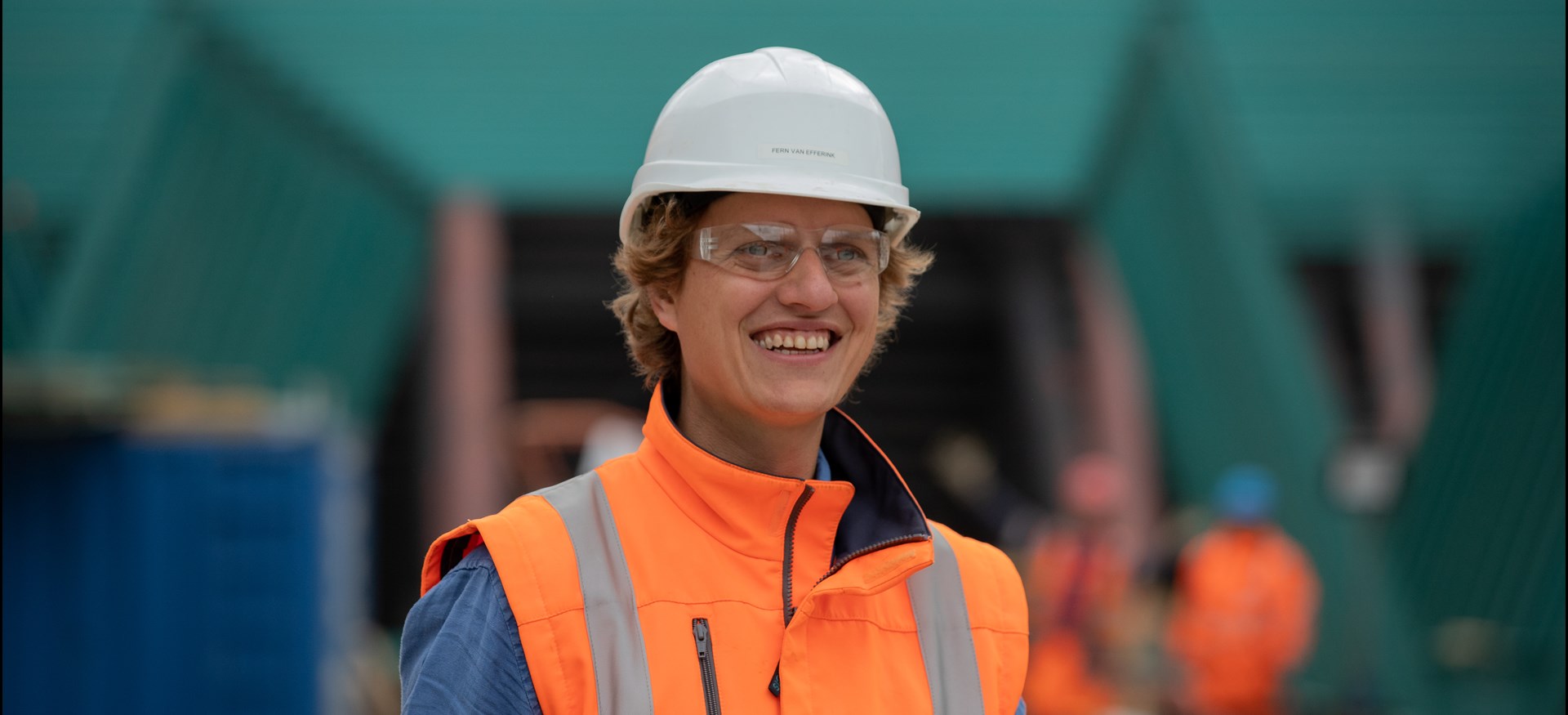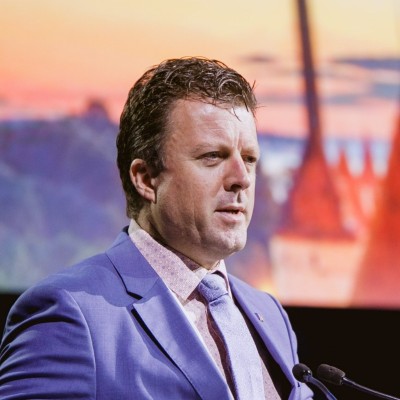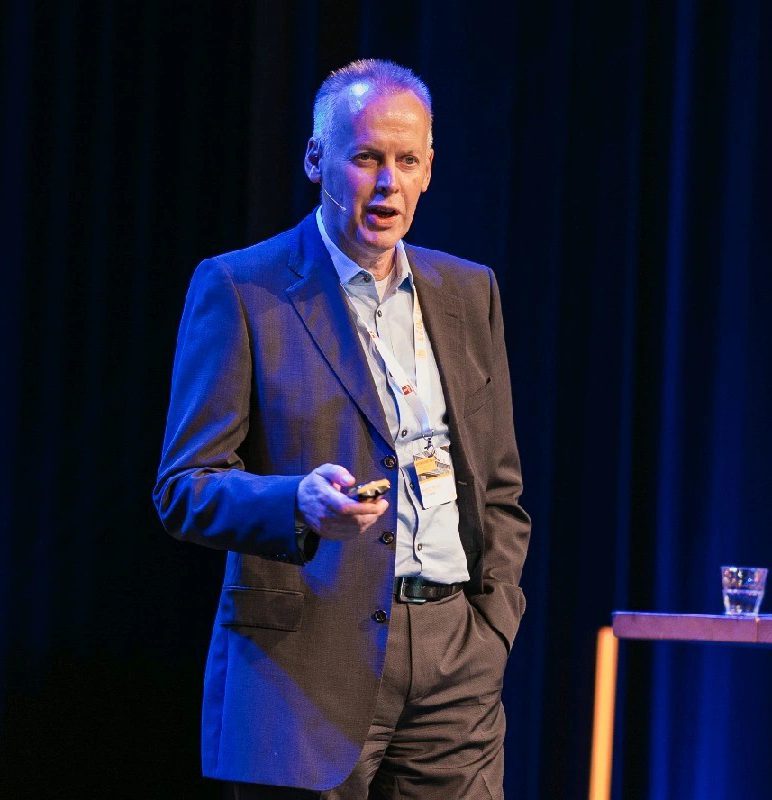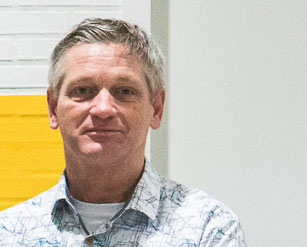Innovations
Explore what’s new, available and working right now to work faster on tunnel renovations, with less risks for those involved.
Hosted by:

Urs Grunicke - UHG Consult

Fern van Efferink - Rijkswaterstaat
Speakers

Felix Amberg
Amberg Group

Drainbot
Drainbot

Duco Bergwerf
Volker Staal en Funderingen

Floor van Daatselaar
Volker Staal en Funderingen

Daniele Di Fiore
Tecne S.p.A.

Manlio Culotta
Tecne S.p.A.

Joel van Stee
Tunnel Joint Experts

Frank Blok
Tunnel Joint Experts

Stefano Guanziroli
HINFRA

Ruben Van Coile
Ghent University

Thomas Thienpont
Ghent University

Philipp Summer-Ali
Elkuch Group Liechtenstein

Michiel-Martijn Willemsen
Ballast Nedam
Speakers

Felix Amberg
Amberg Group

Drainbot
Drainbot

Duco Bergwerf
Volker Staal en Funderingen

Floor van Daatselaar
Volker Staal en Funderingen

Daniele Di Fiore
Tecne S.p.A.

Manlio Culotta
Tecne S.p.A.

Joel van Stee
Tunnel Joint Experts

Frank Blok
Tunnel Joint Experts

Stefano Guanziroli
HINFRA

Ruben Van Coile
Ghent University

Thomas Thienpont
Ghent University

Philipp Summer-Ali
Elkuch Group Liechtenstein

Michiel-Martijn Willemsen
Ballast Nedam
Presentations
Keynote
Introduction
By Karin de Haas & Steve Phillips
Steve Philips is secretary general of CEDR. This organisation is part of the Beyond a tunnel vision conference from it’s first edition on. Their input as owners of tunnels is crucial to program this event and Steve Philips will welcome you as the well informed host he always it. Karin de Haas is the director of the Dutch Center for Underground Building and manager of the Dutch-Flemish tunnel program. Within this program on of it’s targets focusses on establishing a European network of tunnel owners and experts to face the challenges we face together. As co-host she will welcome you with all the enthusiasm she feels for this network because Karin ❤️ tunnels.
Keynote
Welcoming speech by guest nation and president of the CEDR community 2024
By Kathy Vandenmeersschaut
“The preservation of the Pan-European Road Network demands close attention, as decades of service have taken a toll on its infrastructure. This is especially true for the network’s most critical components: our bridges and tunnels.” With this statement in the Declaration of Dublin, Kathy Vandenmeerschaut, Administrator General of the Agency for Road and Traffic Flanders, Belgium (AWV), launched a collaborative initiative uniting all National Road Authorities across Europe. Together, they aim to elevate the management, maintenance, and renovation of tunnels on both political and societal agendas. In her opening speech, Kathy will outline why this collaboration is crucial for NRAs and explain how the “Beyond a Tunnel Vision” conference serves as a vital stepping stone for Flanders, for her own efforts, and for the entire CEDR community.
Keynote
Proud to be an asset manager!
By Alfons van Marrewijk
Alfons van Marrewijk, is Full Professor of Construction Cultures at the Department of Management of the Built Environment at the Delft University of Technology, Adjunct Professor of Project Management at BI Business School Oslo and Associate Professor at the Department of Organisation Sciences at the VU Amsterdam. His academic work shows in-depth interests in the everyday life of employees in technically oriented organisations and complex mega-projects in the construction and infrastructure sector. Alfons will discuss the growing importance of maintaining critical infrastructures and share the new and inspiring perspective of Stewardship. With growing challenges and the continuous demand of society to keep critical infrastructure open at all times, the responsibility of tunnel managers changes. He will discuss how tunnel managers can move forward together, by using a hope-driven transition.
Presentation
Renovation, management & maintenance of tunnels
Fitbit for tunnels: getting a grip for asset owners
By Mohammad Fotouhi & Michel Boutz
Due to settlements, loads, and environmental impact, damage occurs in tunnel constructions by material degradation. How this degradation progresses cannot yet be accurately predicted. In collaboration with the Centre for Underground Construction the Technical University of Delft is developing the Fitbit for tunnels: a way to monitor the condition of tunnel structures. Starting by identifying and selecting the critical locations and deteriorations in a tunnel. Next, develop, select, test, and implement sensors capable of detecting relevant changes in material properties. Collect the data generated by these sensors and interpret it using Artificial Intelligence. This session will delve into the Fitbit for tunnels.'
Presentation
Asset management for tunnels
Lifecycle costs (LCC) for tunnels: a new model
By Hans Adden
With limited resources, understanding the lifecycle costs over the entire lifecycle of a tunnel is critical. Lifecycle costs (LCC) aggregates all costs incurred throughout the lifespan of an asset. The German DAUB has developed a model for calculating the LCC of a tunnel. While tailored for Germany, we believe there are significant opportunities to apply this model to your tunnel. Attend this presentation to gain insights into the model and explore opportunities for your tunnel.
Presentation
Skills & resources for tunnels
Tunnels getting more independent from the power grid: an important step in energy transition
By Rene List
The Austrian highway road operator ASFINAG has made a Expressway with more than 16km length in Vienna, including six tunnels within and the traffic control centre, self-sufficient by generating its energy. This energy is used for the normal daily consumption of the route, and the surplus is stored in large batteries. To transport and distribute the energy, ASFINAG has installed its own medium-voltage network. This allows energy to be generated, stored and used where and when needed. An central energy management system controls the energy flows and ensures monitoring. In a power outage around Vienna, the most critical systems on this layout can continue to operate for about ten hours. Learn more about the status, the methodology, the future of this project, and possibilities for your tunnel project.
Presentation
Renovation, management & maintenance of tunnels
Tunnels: a heritage to regenerate. Italian EU funded program on refurbishment of road tunnels
By Enrico Mittiga
Tunnels: a heritage to regenerate. In Italy, hundreds of tunnels, bridges and viaducts are needed to cross hills, valleys, and streams. Regenerating maintenance interventions on this important heritage and preventive maintenance of more recent assets have become urgent. No other country has so many. If we look at tunnels, Italy alone has half of all European tunnels, totalling 500 kilometres. However, this important heritage is ageing: most of the bridges, viaducts, tunnels and the motorway network itself were built between 1960 and 1980. In addition, the network has to cope with the stress caused by an average daily traffic of 40,000 vehicles per section (compared to 27,000 in France, for example), and with a particularly fragile territory and its hydrogeological instability. Suffice it to say that two thirds of the landslides in Europe occur in Italy and that this figure is likely to increase with the extreme events caused by climate change.It has become imperative to start a campaign of investigations on bridges, viaducts and tunnels considering the wear and tear caused by ageing, but also extreme weather events and the increasingly evident climate change, which affect road transport infrastructure. With support of the EU funds were allocated to start this campaign and Italy is now in the middle of this campaign. How far are they and what lessons have they learned so far?
Presentation
Asset management for tunnels
Developments in tunnel asset management with CERN
By Vanessa Di Murro
The European Laboratory for Particle Physics (CERN) hosts the most powerful particle accelerator ever built, the Large Hadron Collider (LHC). To guarantee the safe running of the particle accelerators, the maintenance of CERN underground infrastructure plays an important role. Ageing and deterioration of tunnel defects are becoming more evident and inevitable. Detecting and monitoring cracks in tunnels are crucial for maintaining the structural integrity and safety of the infrastructure. However, access to most of the underground areas is regulated and granted only during specific periods of the year, for 1-2 months. Such limited time poses a great challenge to the visual inspection and field monitoring of the CERN infrastructure over tens of kilometres. The presentation will focus on CERN Tunnel Asset Management strategy and the implementation of smart monitoring technologies used to inspect and assess CERN large-scale infrastructure. This includes automated crack detection systems by using advanced robotics solutions and distributed fibre optic sensors, that can provide real/time data on structural changes, enhancing preventive maintenance activities.
Presentation
Skills & resources for tunnels
Norway's national virtual & physical tunnel training centre; how collaboration made great things possible
By Helen Roth
VIA is currently in the second phase of developing a virtual tunnel laboratory for the development and testing of installations in realistic environments. Beside this virtual centre Norway has a Demo Tunnel Gandall. It is the industry’s arena for development, testing, demonstration and learning. The facility is Norway’s first full-scale demo tunnel and centre, filled with technology for the tunnels of the future. How did collaboration between government, industry and knowledge institutes succeed? Could this be of use for other tunnelowners?
Plenary debate
Programming our renovation challenge; moving forward together
By Jan van Rensbergen & Maarten Reinking & Rene List & Enrico Mittiga & Peter Walsh
Managers of tunnel renovation programs from Austria (Rene List), Belgium (Jan van Rensbergen), Italy (Enrico Mittiga) and The Netherlands (Maarten Reinking) Plenary discussion on the advantages and disadvantages of programming tunnel renovations. The discussion will be lead by Peter Walsh who is the CEO of Irelands Transport Infrastructure Ireland and the General Boardmember of Ireland in CEDR.
Presentation
Renovation, management & maintenance of tunnels
Tunnels in the Polish network
By Przemysław Padło
In 2002, just two years before joining the European Union, Poland’s expressway network was less than 520 km in length. Considering the country’s area of 322,575 km², this was far from being a cohesive network. However, the length of expressways in Poland has since increased nearly tenfold, and by 2024, it is expected to exceed 5,200 km. This growth signifies that the majority of Poland’s expressway network now consists of modern, safe, and far more comfortable roads compared to the ones that were rebuilt in the aftermath of World War II. Poland has also gained considerable experience in constructing modern bridges with spans designed to cross significant natural obstacles such as the Vistula and Odra rivers. Recently, there has been a growing need to build longer tunnels, and while they have already completed some of the first projects, they are continually gaining operational experience. Additional tunnels are currently in various stages of implementation, design, and planning. The General Directorate for National Roads and Motorways (GDDKiA) is the government body responsible for the planning, coordination, construction, ongoing maintenance, as well as the safety and traffic management of Poland’s national roads. In this presentation, Przemysław will share early experiences from the perspective of a road and bridge engineer, a road safety auditor, and, most importantly, a GDDKiA employee. Additionally, he will highlight the actions already undertaken and the future initiatives aimed at enhancing the knowledge and competencies of the organisation in these areas.
Presentation
Asset management for tunnels
Long term management of tunnel assets
By Martin Knights & John Nicholas
Later this year, the UK Construction Research Association (CIRIA) will publish Guidance on Long-Term Tunnel Asset Management. This is not a manual for repairs and maintenance. It is an overview of best practices in technical and commercial decision-making for a wide range of stakeholders—not just for owners, designers, or contractors. Today, we have digital abundance to enable smarter use of existing and new tunnel infrastructure, enhancing the case for whole-life cost judgments when owners and operators are making capital investments. Globally, owners have constrained budgets, and onerous planning for new infrastructure is extending the delivery of new infrastructure. In some cases, it may be better value to extend the life of existing infrastructure using better predictive methods of monitoring the structural health of the tunnel lining and to renew existing internal technology to increase capacity. The CIRIA Guidance draws on best practices of asset management and processes to promote better governance and apply systems thinking through the life cycle phases of planning; sustainable practices in design; use of materials; methods of construction and installation; and operations and maintenance of tunnels.
Presentation
Skills & resources for tunnels
The force of ETP in the renovation of the Beverentunnel
By Matthew Derycke & Stefaan Seykens
The Beveren Tunnel renovation project is not just any renovation. It is a complex and large-scale project that poses significant challenges, especially in the field of Education, Training and Practice (ETP). But what makes ETP so crucial and challenging in these types of projects? The challenges of ETP in a tunnel renovation project such as the Beveren Tunnel are significant, but with the right approach they can be overcome. By investing in multidisciplinary consultation, extensive training, realistic training and capturing the lessons learned, we can ensure that everyone is as well prepared as possible for any challenge that arises. This not only makes the renovation safer and more efficient, but also contributes to the success and sustainability of the project.
Workshop
Monitoring
Data acquisition within the sealing system of an immersion joint
By Nicas van den Brink
We will dive into the added value that can be created for the asset management of tunnels when attention is given to collection of immersion joint data. Which stakeholders should initiate data collection and who will benefit from this information. What aspects of tunnel sealing systems do we want to monitor during the tunnels lifetime to have an enhanced understanding on remaining design life? To answer these questions we have to create a clear overview of maintainance issues and uncertainties that come across in various tunnel projects. Practical examples will be given from various case studies encountered by Trelleborg.
Workshop
Monitoring
Monitoring the integrity of the Rotterdam metro tunnel
By Edo Noordermeer
We present the monitoring system installed in the Rotterdam metro tunnel to safeguard the integrity of the immersed joints for the coming 10 years. In 2015, large-scale damage was detected in the immersion joints of the metro tunnel in Rotterdam. It was found that the Gina seals in the joints were pushing themselves inwards, causing damage both to the concrete tunnel walls and to the fixation of the support structures. An extensive renovation project was set up to repair the damage and to ensure that the tunnel joints are fit to last another 50 years. As part of this effort, an extensive sensing system was installed to permanently monitor the integrity of the joints. The system consists of a variety of sensors, measuring amongst others joint widths, shape and position of the Gina profiles, forces in the fixation brackets, water pressure and temperatures. Several systems were custom developed for application in this tunnel. In total, more than 1500 sensors are now continuously measuring the state of the tunnel joints. Data from all sensors is automatically transferred from the tunnel to a central cloud-based server and presented in near real-time via interactive dashboards in an online portal. Thresholds have been configured for the various measurements - when a measurement exceeds a threshold, an alarm is raised automatically, and a ticket is generated for follow-up action. The monitoring system provides invaluable input to the tunnel asset management team, not only about the current state of the tunnel, but also predicting future problems early, before they lead to damage. In this presentation, we describe the motivation for installing this unique monitoring system. We present the design of the various sub-systems, as well as the associated data processing pipeline, visualization dashboards and ticketing system for follow-up actions. We also present results from the first two years of measurements. Finally, we give some recommendations and good practices for future tunnel monitoring projects.
Workshop
Monitoring
Benefits of monitoring loads of fixings in tunnels
By Frederic Castille
Fischer offers digital solutions for the building’s entire life cycle. Its range of products comprises global innovations in robotics and sensor technology, BIM services, the fischer FiXperience design software and digital services such as the fischer plug-finder app for selecting products. These solutions optimize the planning, construction, and operation of buildings. Creeping, shrinking, and setting construction materials - changes and deformations such as these present structural engineers with challenges when it comes to tunnels, wind turbines and bridges. It’s a good thing that our SensorAnchor provides a reliable, all-in-one solution offering maximum data transparency through the real-time transfer of preload and operating forces. This provides an early automatic warning for critical connections, allowing you to easily and conveniently monitor the data on the end device of your choice, resulting in minimal maintenance for structures of all sizes. During the workshop we will dive deeper into this technology.
Workshop
Monitoring
No cables, no gateways, no fuzz; Just reliable deformation data
By Reinier Brongers
In the latest COB tunnel deformation monitoring report for emerged tunnels various modern monitoring tools are described. For instance to monitor the movements of tunnel sections over the joint f.i. with a 3D joint sensor. In the past the monitoring was done with 3 potenial meters, each demanding a node to communicate with a gateway. The installation is demanding time and the dimensions of a cabinet to cover the meters is big. We will present data form various tunnel projects thus showing attendees the advantages of having all data in one screen. This new generation of sensors is very compact, easy to install and is not demanding any additional infrastructure or support. They do have their own battery and SIMCard and will work everywhere there is a mobile network available. The sensors also measures the temperature. Alarm settings can be given in and frequency can be changed in time if needed. Data can be imported by means of an API to any platform, tidal data as well as weather data can be integrated to the sensor data. Besides this we will shortly go into the deference between high frequency tiltmonitoring and static tilt monitoring. High frequency monitoring will show the real dynamic behaviour of any object.
Workshop
Monitoring
Case study and CBA in the energy sector
By Fabio Panella
Civil engineering is rapidly embracing digital innovations, and this trend extends to tunneling projects. In collaboration with UK Power Networks, we conducted a case study on automated tunnel inspections. Our approach involved robotic data collection and the utilization of machine learning-powered asset management tools. During the workshop, we will discuss the project’s main outcomes and lessons learnt. Additionally, we’ll provide an exhaustive cost-benefit analysis, considering factors such as enhanced safety, cost reduction, and improved repeatability.
Workshop
Monitoring
AKUT® revolutionizes tunnel monitoring using AI-based intelligent microphones
By Gerald Koenis
The operating noise inside a tunnel is characterized by a specific mix of engine, rolling and airflow noise produced by vehicles passing through. Microphones installed in the tunnel detect acoustic anomalies such as a vehicle-wall and vehicle-vehicle collisions, tyre bursts, voices and shouts, etc. AI-based acoustic detectors recognise the abnormal sounds in real-time and allocate them to predefined noise classes. Accidents and other critical incidents in the tunnel are always accompanied by distinguishable sounds. These sounds occur at the instant in time of the incident - not after a delay - and can be detected immediately. The huge advantage of acoustic detection is that AKUT can react directly to the critical incident (e.g. accident noise after a collision). This means that AKUT can trigger an alarm in the traffic management centre just 1 second after the incident. Other safety systems usually recognize the consequences of an accident indirectly (e.g. slow drivers, queues, etc.) and hence require a longer amount of time to trigger an alarm. Therefore acoustic detection of an incident allows measures to be immediately and automatically activated. For example, the system may trigger an alarm in the tunnel control room and display the video camera image of the affected section on a central screen giving the tunnel operator a real-time overview of the situation. This saves valuable time in providing first aid to people involved and in alerting drivers approaching the scene of the accident.
Workshop
Monitoring
Transforming tunnel maintenance with next-gen 3D scanning
By Patricia Lamas
Amberg’s Infra7D scanning tools are state-of-the-art solutions for tunnelling measurement and monitoring. Lifecycle management of tunnelling infrastructure presents unique challenges, including restricted accessibility, material degradation, safety concerns or water infiltration. Amberg scanning systems demonstrate exceptional adaptability and versatility. Our systems can operate efficiently in demanding environments and deliver high-precision data, making them an ideal choice for engineers and infrastructure project owners.
Workshop
Monitoring
Innovations in tunnel asset management: Automation and insights with computer vision
By Yung Loo
This workshop will discuss the growing appetite and opportunities for innovation in tunnel asset management. In particular computer vision based techniques enabling the automated capture of tunnel inspection imagery and data, advancements in data visualisation and dashboarding and the use of AI and machine learning for defect detection and inventorying. Benefits, blockers and lessons learnt from the development and deployment of innovative technology across tunnel projects in construction and under management across the world shall be discussed.
Workshop
Monitoring
Innovative camera-based displacement monitoring solution
By Koen Hiemstra & Epco Berger
We are introducing TotaLite, a new and innovative camera-based IoT sensing system for precise displacement monitoring. TotaLite addresses the need for more plug & play and cost-effective solutions for real-time tracking of (unwanted) movements of critical infrastructure, such as rail tracks, bridges and tunnels. A variety of sensors is available nowadays for tunnel monitoring, from tilt meter to optical techniques. A inherent merit of optical techniques is that it can cover a longer tunnel stretch with a single sensor. Total stations have been the status quo for automated and manual optical displacement monitoring. However, the use of total stations privileged to skilled surveyors, require regular maintenance and due to its size it’s difficult to apply in a tight tunnel space. With the recent advancements in image processing techniques, a variety of simpler and low-maintenance camera solution become now available, such as TotaLite. TotaLite captures images of survey prisms and converts any sub-pixel changes into displacements while being equiped with the lastest IoT technology (e.g. wireless data transmission). This smart design provides users with the benefit of an easy to use system that’s small, low-power and low-maintenance. This enables people without survey background to install a remote monitoring system and collect sub-millimeter accurate displacement insights for a fraction of the efforts and costs of conventional geodetic methods. New optical technologies open doors for new applciations for tunnel monitoring that I’d like to explore with the audience.
Workshop
Monitoring
Distributed fibre optic sensing for tunnel asset management
By Nicky de Battista
Distributed fibre optic sensing (DFOS) technology enables the measurement of strain and temperature profiles anywhere along a fibre optic cable. When installed on new or existing tunnel linings, a DFOS-based monitoring system can provide insight into the structural performance of an entire tunnel with unprecedented spatial resolution, thus forming an invaluable tool for managing both new and ageing tunnel assets.
Workshop
Innovations
Rhetian railway tunnel rehabilitation method
By Felix Amberg
The Rhetian Railway is the largest Alpine Railway in Switzerland, the network measures more than 385 km, out of which approx. 30% are more than 1’500 m asl. The network comprises 115 tunnels with a total length of approx. 59 km, most of them less than 500m long but with an average age of 115 years. They are mostly masonry lined single track tunnels. Due to the damage nature and extension and clearance limitations more than 50% need to be rehabilitated in the next decades – under operation in night shifts only! A study on various rehabilitation methods in combination with 1:1 scale prototyping showed that only a full replacement of the lining with precast segments also in the invert will guarantee another 100-year life cycle. Under the protection of a movable shield some 600 m of tunnels are now rehabilitated per year in a standardised and safe procedure.
Workshop
Innovations
The first autonomous system for tunnel drainage maintenance
By Drainbot
Tunnel drainage systems are vital for preventing water damage and maintaining structural integrity. Over time, sediments accumulate, reducing efficiency and increasing maintenance needs. DrainBot is the first autonomous system designed to address this issue. Using robotic units that travel through drainage pipes, DrainBot cleans continuously without interrupting tunnel traffic and collects valuable data to support predictive and preventive maintenance. Due to recent flooding in Lower Austria, the DrainBot team is heavily involved in recovery efforts and cannot present in person. This presentation will highlight how DrainBot revolutionizes tunnel maintenance and ensures safer, longer-lasting infrastructure.
Workshop
Innovations
Discover the drilling lock: innovation in foundation technology
By Duco Bergwerf & Floor van Daatselaar
The Drilling Lock from VSF offers a revolutionary solution for installing anchor piles through concrete floors, even under high groundwater pressure. Thanks to an ingenious system of hydraulically operated sliding valves and rubber seals, piles can be installed without water leakage using the Reverse Circulation drilling technique. This makes it possible to install or improve foundations without the need for costly and complex dewatering. In both infrastructure and utility construction, there are numerous renovation and replacement projects where dewatering is often impossible or unaffordable. The Drilling Lock provides a reliable method to create new foundations in existing underground structures without disturbing the surroundings. This results in less inconvenience for residents and lower costs for clients. The Drilling Lock has been successfully applied in the foundation repair of the Princess Margriet Tunnel, where approximately 1400 piles were replaced. This innovation offers new opportunities for complex replacement and renovation tasks.
Workshop
Innovations
How to estimate and how to decide: a practical guide to identify and address tunnel relining – first experiences and lessons learned.
By Daniele Di Fiore & Manlio Culotta
Autostrade per l’Italia, with its engineering firms TECNE, has developed an approach to refurbish existing tunnels named Tunnel Renewal Strategy (“TRS”). TRS aims to achieve service life’s renovation through 8 different relining treatments. Over the last three years the design of the solutions has been developed and studied and key factors, leading to success or to the need for further improvements, have been identified. Beyond this, the method for selecting the right treatment among the solutions is driven by a multicriteria analysis including a supporting decision tool, based on asset management best practice, to account for others then technical aspects. Sound decision making is becoming part of the asset management strategy of the Organization, involving the Client and the Contractor in a continuous exchange of insights about budget limits, service life of the solutions and needed technologies to minimize the impact and keep serviceability of a very busy infrastructures.
Workshop
Innovations
Critical insights in tunnel maintenance: identifying and addressing underground tunnel joint issues
By Joel van Stee & Frank Blok
Facing the complexities of tunnel longevity due to environmental impacts, thermal expansion and contraction, material wear, and aging, the precision in predicting how these stresses and movements affect tunnel structures is paramount. Tunnel joints are complex but vital components that accommodate tunnel movements while ensuring water tightness through a diverse and specific set of solutions and materials. This demands a specialized approach to investigate, analyze, engineer, and solve refurbishment challenges. This session introduces an innovative method that utilizes innovative diagnostic tools and dynamic modeling for residual lifetime determination of tunnel joints and integrates these insights into practical engineering solutions. We combine expert analysis with actionable refurbishment and modification strategies, crafted to meet the high standards of experienced tunnel engineers, asset owners, and asset managers. A significant part of this session will focus on helping participants recognize critical but often overlooked problems with underground tunnel joints. By demonstrating how to detect and address these issues before they lead to significant damage, we provide vital insights into maintaining the integrity of these essential components by addressing them as a system. By attending, you'll explore how to leverage these advanced techniques to enhance your existing knowledge and extend the operational life of critical infrastructure effectively. Join us to refine your expertise with the latest in tunnel assessment and intervention technologies.
Workshop
Innovations
Automated concrete relining technique– when time is of the essence
By Stefano Guanziroli
HINFRA has developed a technology named ETLR (Extruded Tunnel Lining Regeneration), with the scope to build new linings for existing tunnels adopting an ultrafast horizontal slip-forming. The ETRL processing train is a machinery consisting of several modular units, each solving a specific function. The incremental industrialization of set of operations, typically the demolition, the surface preparation, and the new lining phases, combined with the performances of the special concrete, allow to target productivity rates far from the traditional methods in use in the industry. The engineered Fiber-Reinforced Concrete (FRC) is characterized by high early-age strength parameters, that allow a rapid slip-form at a predetermined time. A solid step into the technology implementation has consisted in the construction of a real scale extrusion facility, where the main components of the ETLR train are designed, produced, and tested. The solution was then transferred to pilot projects starting from 2023.
Workshop
Innovations
Better fire performance at reduced cost: the promise of structural fire engineering
By Ruben Van Coile & Thomas Thienpont
The fire performance of tunnel structures is typically specified through nominal fire resistance, where structural performance is evaluated considering a standardized heating curve for a prescribed number of minutes. Often the fire performance evaluation is further simplified by only considering limits to the temperature increase inside the concrete, hereby completely neglecting the redundancy in the structural system. Structural fire engineering calculations explicitly account for these redundancies in fire resistance evaluation, enabling optimized fire protection and potential cost reduction. There is however a second and more important benefit of structural fire engineering. Real fires do not only have a heating regime, such as those considered in the nominal fire resistance evaluations, but also a cooling phase. The cooling phase can cause significant changes in tunnel behavior, such as large permanent deformations, extensive cracking on the unexposed (cold) side, and in extreme cases, even structural collapse hours after the fire is extinguished. Structural fire engineering calculations allow to evaluate the tunnel’s fire performance during all phases of the fire. Thus, it is possible to design tunnels for burnout performance (meaning that the tunnel is designed to also survive the cooling phase), and even to design the tunnel to limit the post-fire damage and downtime. Ultimately, structural fire engineering calculations can help optimize fire protection strategies, balancing initial fire protection investments with potential damage costs, thereby reducing the lifetime cost of fire for tunnel structures.
Workshop
Innovations
Innovative escape doors without electromechanical opening aid for- road and street tunnel
By Philipp Summer-Ali
The perfect solution for sections with varying air pressure. Due to the innovative concept, pressure differences are compensated without opening aid. This allows the door to be opened with little force at any time in the event of an incident.
Innovations
Light reflecting asphalt - whiter roads for a brighter future
By Michiel-Martijn Willemsen
To align with the goals of the 2016 Paris Climate Agreement, Ballast Nedam Road Specialties developed a light-reflecting stone mastic asphalt (SMA) surface course specifically for tunnels. The aim was to create an SMA surface that could reduce the number or intensity of light fixtures in tunnels, thereby lowering daily energy consumption, while still meeting the stringent mechanical, functional, and safety requirements of the Ministry of Infrastructure and Water Management (Rijkswaterstaat). The challenge was to find a suitable white aggregate with the right cubical shape and high resistance to polishing, while also developing a future-proof mixture as a warm mix asphalt (with a production temperature below 140°C). In 2024 alone, Ballast Nedam laid 3,100 tons of this reflective SMA surface course in tunnels, including the Blankenburg tunnels and the Roer- and Swalmentunnels.
Workshop
Courses
Advancing expertise in tunneling: ITA’s commitment to education and training with ITACET
By Robert Galler
ITA, the International Tunnelling and Underground Space Association, has identified education and training as one of its main strategic goals. In 2007, in order to promote and assist in the coordination of education and training in the tunnelling and underground space industry, ITA decided to create a Committee on Education and Training (the ITACET Committee). Robert Galler, Professor at the Montan university Leoben in Austria and President of the Executive Board of ITACET, will take you into the wide range of available lectures on management, maintenance and renovation.
Courses
9-days tunnel course ie-net & ABTUS-BVOTS
By Etienne Hemerijckx & Bart de Pauw
A 9-day tunnelling course will start from December, providing an integrated view of underground structures and tunnels. The entire ‘life cycle’ will be covered, from design to management in operation, maintenance and renovation. Where in the past, mere knowledge transfer in technology was the focus, this course goes further and also highlights the challenges of the asset manager and his operator. Pure tunnel technologies and concepts are certainly covered, also in terms of financial risks in their realization, but it does not stop here. Structures in operation face major challenges to remain functional and healthy with the user at the center. The content of this course, which is a collaboration between the Flemish Engineers Association and the Belgian Association for Underground Techniques and Urbanism ABTUS-BVOTS, will be submitted for reflection and fine-tuning.
Workshop
Courses
Masterclass tunnels
By Frederik Wagenaar & Maaike Helthuis
Are you eager to enter the world of tunnel design but feel you lack the foundational knowledge? Or are you already working at the forefront of tunnel projects and looking to expand your expertise? Then the TEC Masterclass Tunnels is for you! In this Masterclass, TEC’s leading experts will guide you through 9 comprehensive modules covering key tunnel-specific topics. From understanding whether those 50 different tunnel technical installations are truly necessary to essential insights into tunnel safety, you’ll gain valuable knowledge on making tunnel designs sustainable—beyond just using solar panels and LED fixtures. Through practical examples, real-life cases, and engaging discussions, our experts will provide a deeper understanding of these complex subjects. While the goal isn’t to make you a specialist in one narrow field, you will develop a well-rounded foundation, connecting various aspects of tunnel design to become a versatile tunnel professional. Even if you’re an experienced tunnel expert, the TEC Masterclass offers an excellent opportunity to broaden your knowledge and stay ahead in the industry.
Workshop
Courses
E-learning program "How to renovate tunnels"
By Johan Naber
The E-learning program 'how to renovate tunnels' aims to increase the basic knowledge level of employees in tunnel projects, improve understanding and thus prevent confusion. This allows tunnel professionals to be deployed faster and more efficiently and to collaborate better because they understand each other better and see each other's interests.
Workshop
Courses
Training and education of tunnel staff
By Bert Bosch
The Training and Education System thoroughly prepares traffic controllers for both daily operations and emergency situations. The system is an exact replica of the actual control system, allowing traffic controllers to practice in a realistic environment without using the real tunnel. This increases the knowledge and operational skills of the staff, leading to increased operational safety and efficiency. The Education, Training, and Exercises program focuses on training all emergency services involved in tunnel safety. Through joint training sessions and exercises, coordination and response during real emergencies are improved, resulting in faster and more effective interventions. This also minimises the need to close tunnels for training, thereby maximising tunnel availability. Investing in these programs contributes to a culture of continuous improvement and safety within the tunnel sector.
Workshop
Courses
Training as a crucial element in the transfer of total tunnel renovation – case of the digital twin Kennedy Railway Tunnel
By Christof De Backere & Vincent De Breuck
In the final phase of a realization, there is mass of knowledge accumulated by the project management (responsible for the realization of the project) and by the contractor. This knowledge manifests itself in an extensive documentation, including a digital BIM model and its source files, project-specific information and requirements, classic as-built documents, etc.... In the transfer to the asset manager who will be responsible for further maintenance, the big challenge is to do this thoroughly and in a structured way, so that no knowledge is lost. Alignment and training are crucial here. The presentation focuses on the case study of the Kennedy Railway Tunnel, a total renovation project. The benefits of a digital twin model can only be fully exploited if the asset manager is involved in the entire handover process, resulting in an implementation of this digital twin model in the final asset manager's own management systems and tools. This process can only be successful if these trainings and competences are in place. These are courses or trainings on the job, tailor-made.
Other Workshops
Courses
Get insights into available courses, training and e-learnings on how to be a tunneling expert. Do you organise a training yourself? Sign up below!
Monitoring
Get an excellent overview of available monitoring & scanning techniques to get a grip on the life-expectancy of your tunnel, it’s installations and it’s software. A must see for the digital asset manager of the future.

General
Terms






































